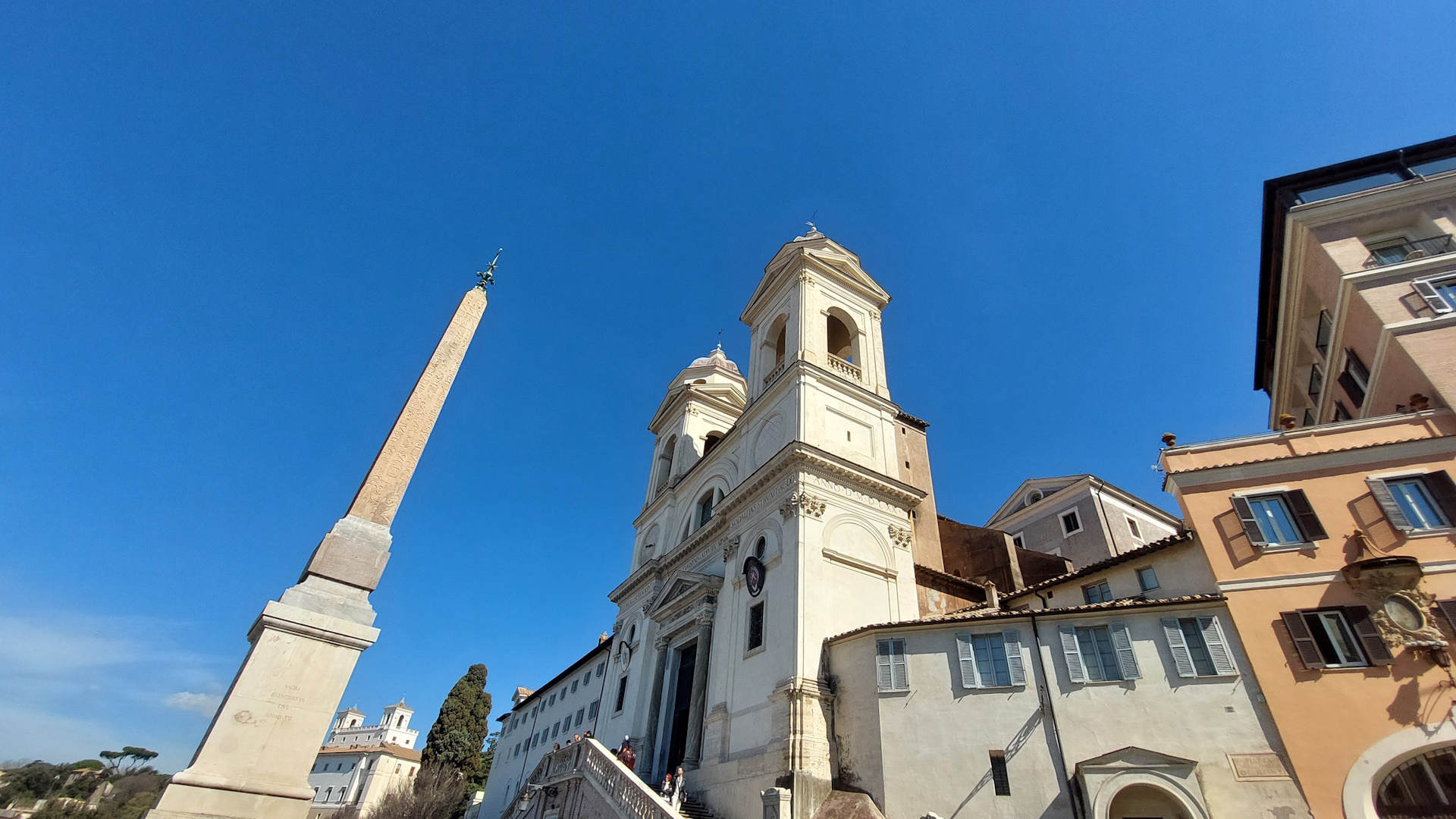
Connected to Piazza di Spagna by the famous double flight of steps built and designed by Francesco de Sanctis between 1723 and 1725, the square is a veritable balcony from which to admire a wonderful panorama of Rome.
The square houses the Church of Santissima Trinità dei Monti, one of the five Francophone Catholic churches in Rome. Founded as early as the end of the 15th century, the church was restored and enlarged after the sack of Rome in 1527 thanks to funding from several French cardinals. In 1570, the façade designed by Giacomo Della Porta and Carlo Maderno was completed, adorned by the two famous bell towers. Together with the adjoining monastery, the church is a jewel of art with a sumptuous decorative garment including, for example, a famous and beautiful “Deposition” by Daniele da Volterra. Also worth mentioning in the convent are frescoes by Andrea Pozzo and a unique example of anamorphosis painted in 1642 by Emanuel Maignan.
Between 1585 and 1586, Pope Sixtus V commissioned Domenico Fontana to open here a road connecting the Pincio hill with the basilica of Santa Maria Maggiore. Called “Strada Felice” after the pontiff’s first name, the very long and evocative straight street is now divided into Via Sistina, Via delle Quattro Fontane, Via Agostino Depretis, Via Carlo Alberto, Via Conte Verde and Via di Santa Croce in Gerusalemme. Instead, the erection in front of the church of the Sallustian Obelisk, the penultimate of the great obelisks erected in papal Rome, dates back to the late 18th century.
Information
 Condividi
Condividi
Location
To find out about all accessibility services, visit the Rome accessible section.











































